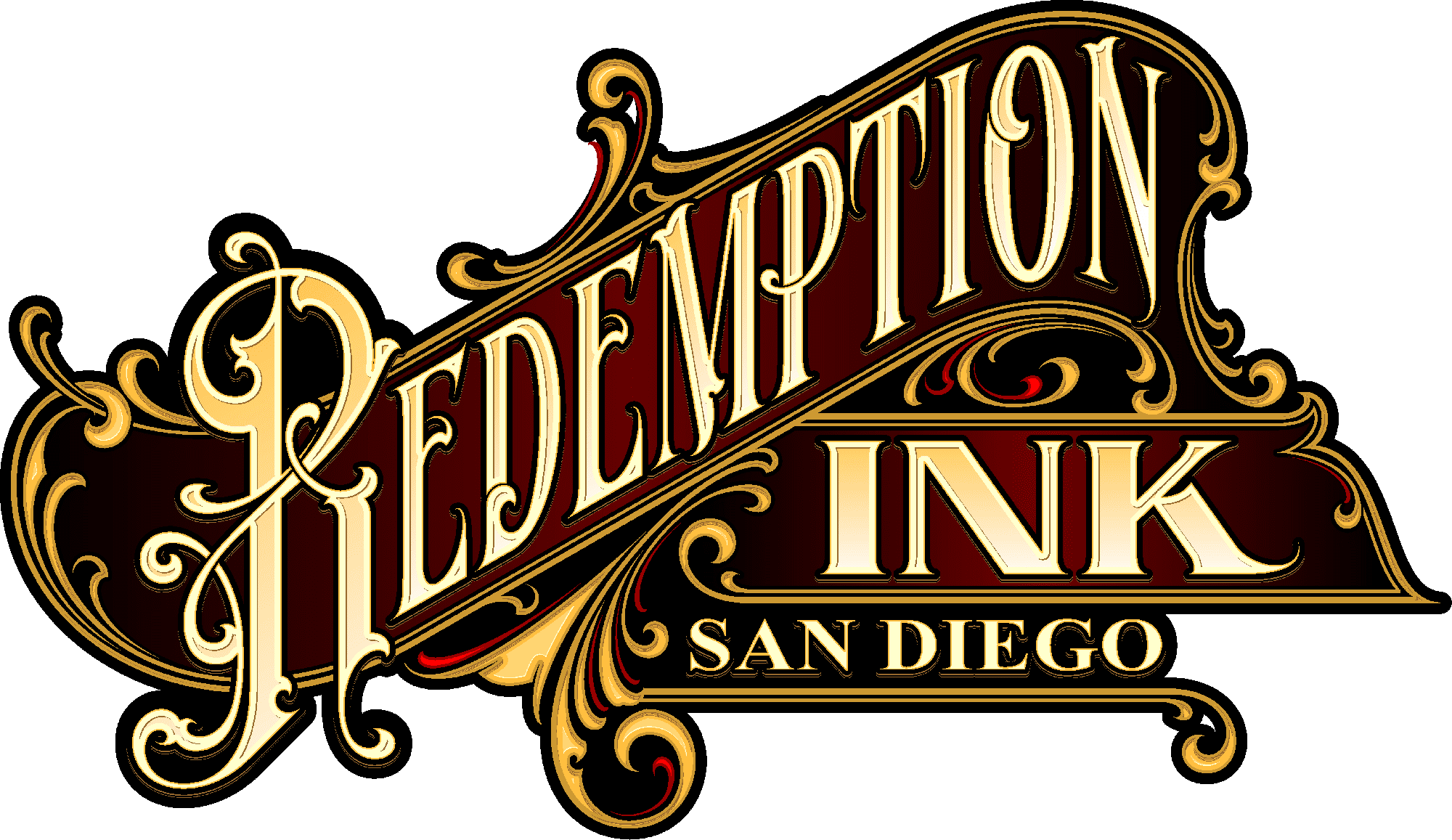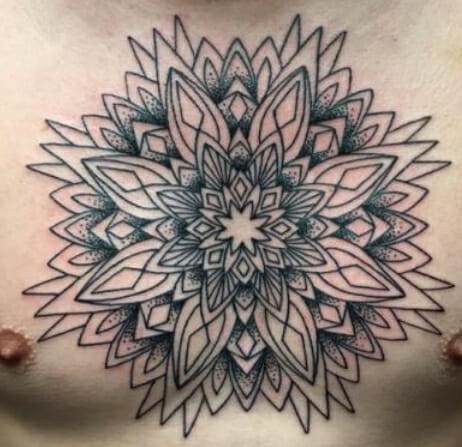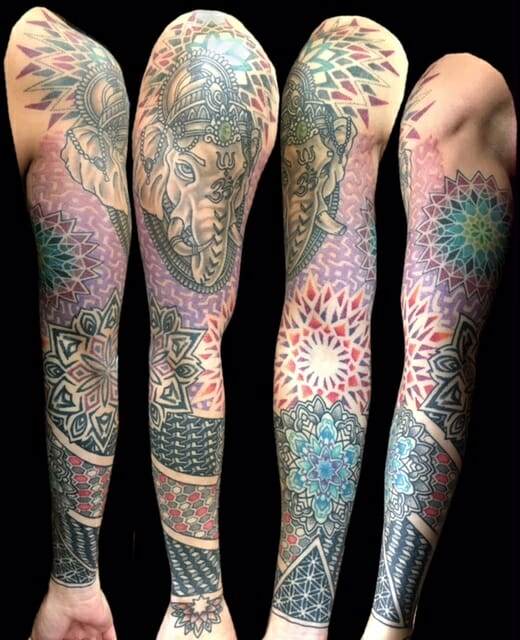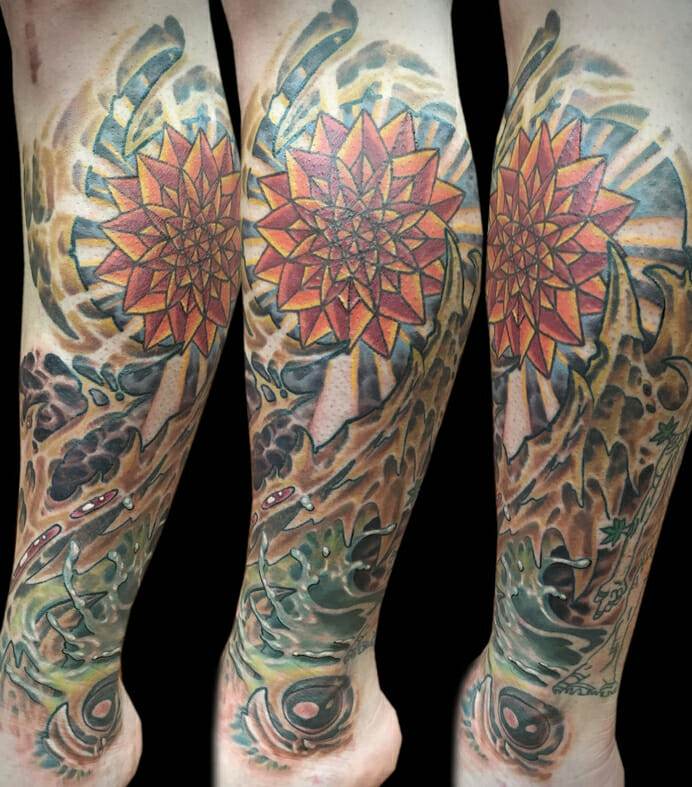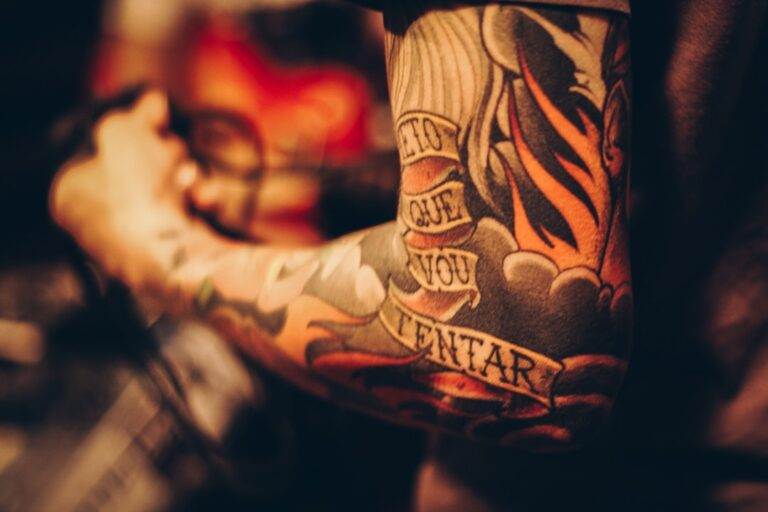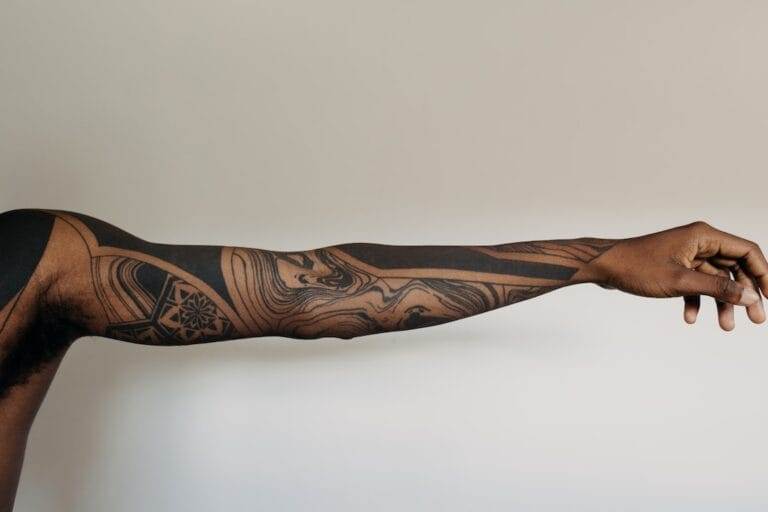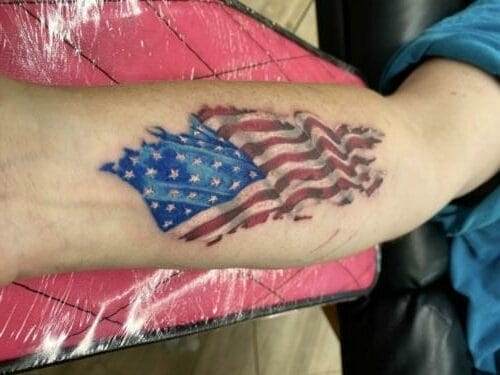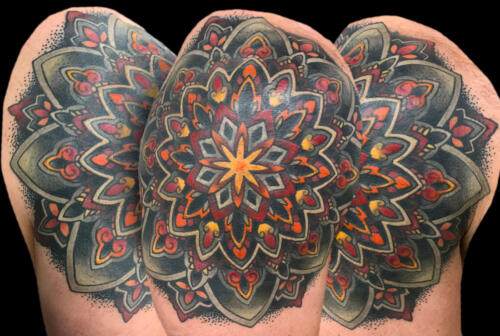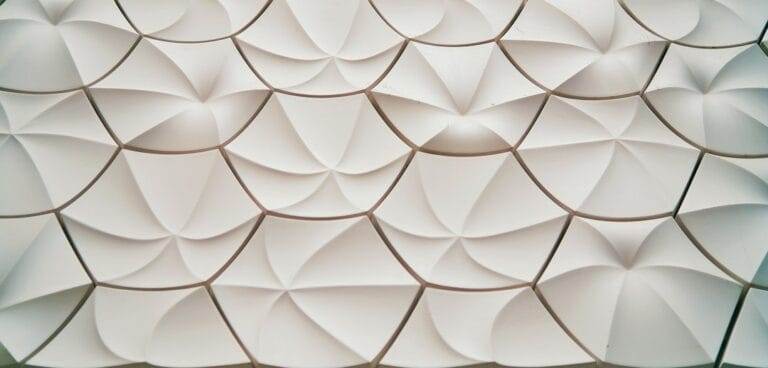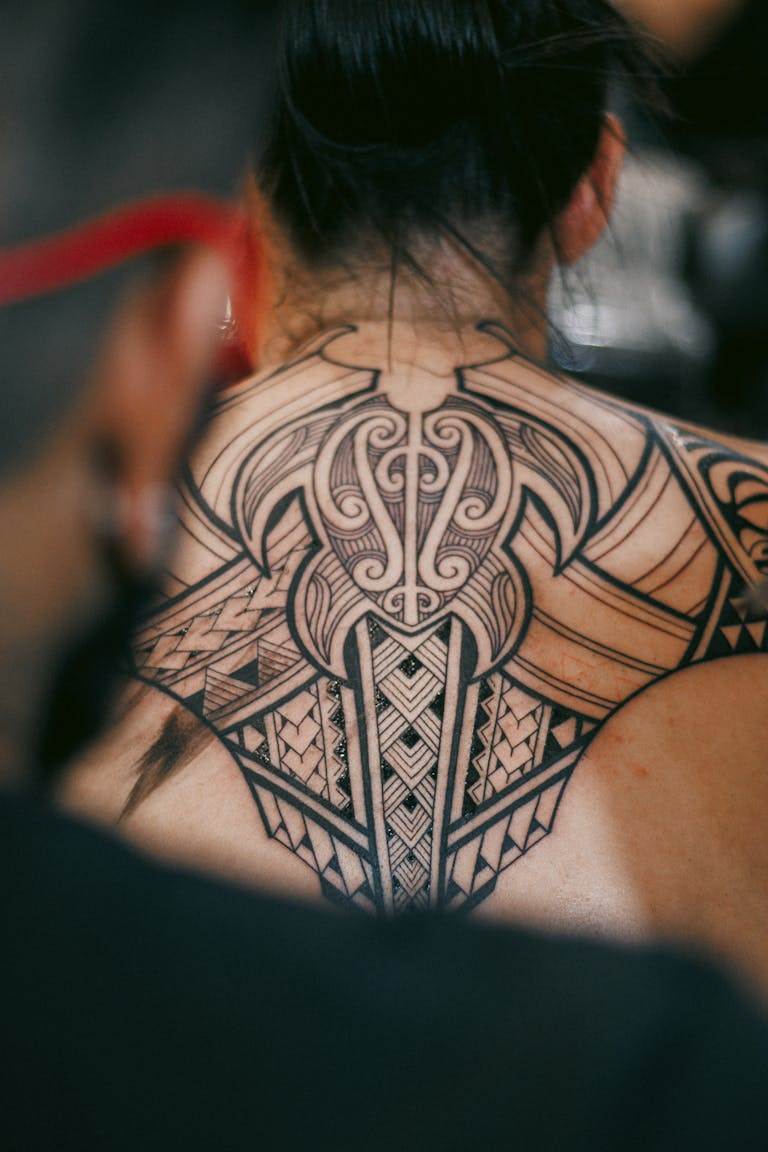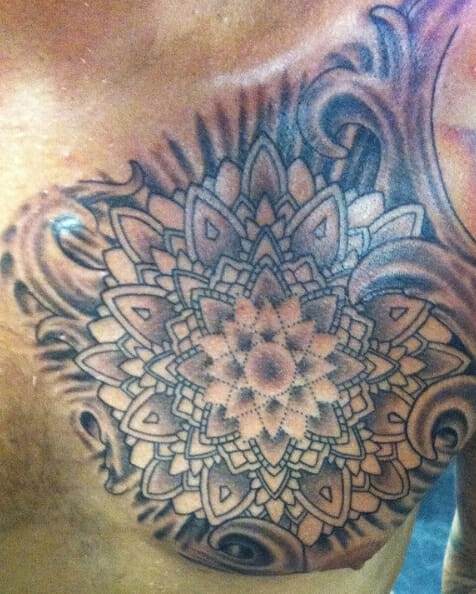
Geometric tattoos have become increasingly popular in recent years, with their clean lines and intricate patterns capturing the attention of tattoo enthusiasts around the world. These tattoos are characterized by their use of geometric shapes, such as triangles, circles, squares, and hexagons, to create visually stunning designs on the skin. In this blog post, we will explore the history of geometric tattoos, their rise in popularity in modern times, the meaning behind these tattoos, the different styles available, the symbolism of geometric shapes, the placement on the body, the process of getting a geometric tattoo, the popularity among different age groups, and the future of geometric tattoos in the world of body art.
The history of geometric tattoos
Geometric tattoos have a rich history that dates back thousands of years. They can be traced back to ancient cultures such as the Egyptians, Greeks, and Mayans, who used geometric patterns in their art and architecture. These cultures believed that geometric shapes held symbolic meanings and spiritual significance. For example, the Egyptians used triangles to represent the trinity of life, death, and rebirth, while the Mayans used circles to symbolize unity and eternity.
Over time, geometric tattoos evolved and spread to different parts of the world. In Japan, for instance, geometric patterns were incorporated into traditional irezumi tattoos, which were often worn by members of the yakuza (Japanese mafia). These tattoos were not only decorative but also served as a form of identification and protection.
The rise of geometric tattoos in modern times
In recent years, geometric tattoos have experienced a surge in popularity. This can be attributed to several factors, including the influence of social media and the growing acceptance of tattoos in mainstream culture. Platforms like Instagram have allowed tattoo artists to showcase their work to a global audience, leading to increased exposure for geometric tattoos.
The clean lines and symmetrical designs of geometric tattoos have also resonated with many people in the 21st century. In a world that can often feel chaotic and unpredictable, these tattoos offer a sense of order and balance. They are seen as a form of self-expression and a way to connect with something greater than oneself.
The meaning behind geometric tattoos
Geometric tattoos can hold different meanings depending on the shapes and patterns used. Each geometric shape has its own symbolism, which can be interpreted in various ways. For example, triangles are often associated with strength, stability, and harmony. Circles represent unity, wholeness, and eternity. Squares symbolize balance, stability, and structure. Hexagons are often associated with balance, harmony, and transformation.
In addition to the symbolism of the shapes themselves, geometric tattoos can also hold personal meanings for the individuals who choose to get them. These meanings can be deeply personal and may reflect the wearer’s values, beliefs, or life experiences. For example, someone might get a geometric tattoo to represent a significant life event or to honor a loved one.
The different styles of geometric tattoos
Geometric tattoos come in a variety of styles, each with its own unique characteristics. Some popular styles include dotwork, blackwork, watercolor, and minimalist.
Dotwork is a style that uses tiny dots to create intricate patterns and shading. This style can give the tattoo a textured and three-dimensional appearance.
Blackwork is characterized by bold black lines and solid black areas. It is often used to create bold and graphic designs.
Watercolor is a style that mimics the look of watercolor paintings. It uses vibrant colors and soft edges to create a dreamy and ethereal effect.
Minimalist geometric tattoos are simple and understated. They often feature clean lines and minimal shading, focusing on the beauty of simplicity.
The symbolism of geometric shapes in tattoos
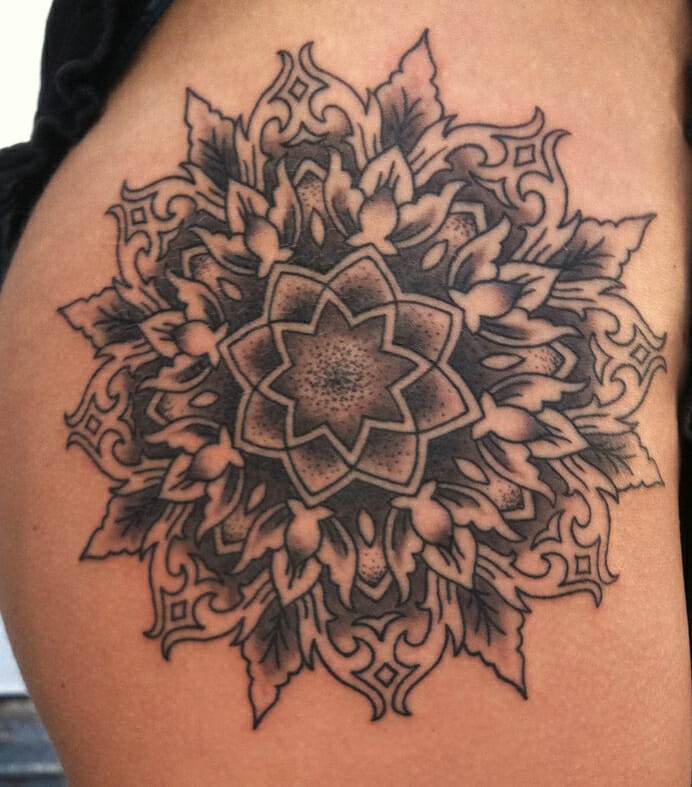
Each geometric shape used in tattoos carries its own symbolism and meaning. Understanding the symbolism behind these shapes can help individuals choose a design that resonates with them on a deeper level.
Triangles are often associated with strength, stability, and harmony. They can also represent the trinity of life, death, and rebirth. In some cultures, an upward-facing triangle is seen as a symbol of masculinity, while a downward-facing triangle represents femininity.
Circles represent unity, wholeness, and eternity. They can also symbolize the cyclical nature of life and the interconnectedness of all things. In some spiritual traditions, circles are used as a symbol of protection and divine energy.
Squares symbolize balance, stability, and structure. They represent the four elements (earth, air, fire, and water) and the four cardinal directions (north, south, east, and west). Squares are often associated with order and rationality.
Hexagons are often associated with balance, harmony, and transformation. They represent the union of opposites and the integration of different aspects of life. Hexagons can also symbolize the interconnectedness of all things.
The placement of geometric tattoos on the body
Geometric tattoos can be placed on various parts of the body, depending on personal preference and aesthetic considerations. Some popular areas for geometric tattoos include the forearm, upper arm, back, chest, and thigh.
The forearm is a popular choice for geometric tattoos because it offers a large canvas for intricate designs. It is also easily visible, allowing individuals to showcase their tattoos when desired.
The upper arm is another common location for geometric tattoos. This area provides ample space for larger designs and allows for easy concealment if desired.
The back is a popular choice for larger geometric tattoos that span across multiple areas of the body. This location offers a large canvas for complex designs and allows for easy concealment if desired.
The chest is often chosen for geometric tattoos that hold personal significance or represent important life events. This area is easily visible and can be a powerful way to express oneself.
The thigh is a popular choice for geometric tattoos, especially among women. This area offers a large canvas for intricate designs and allows for easy concealment if desired.
When considering the placement of a geometric tattoo, it is important to take into account factors such as pain tolerance, visibility, and the potential impact on future career prospects.
The process of getting a geometric tattoo
Getting a geometric tattoo involves several steps, from finding a reputable artist to aftercare. It is important to take the time to research and choose an artist who specializes in geometric tattoos and has a portfolio that aligns with your aesthetic preferences.
Once you have found an artist, the next step is to schedule a consultation. During this consultation, you will discuss your ideas and vision for the tattoo. The artist will then create a design based on your input and their expertise. It is important to be open to their suggestions and trust their artistic judgment.
After the design has been finalized, the tattooing process can begin. The artist will clean and prepare the skin before applying the stencil of the design. They will then use a tattoo machine to create the tattoo, following the lines of the stencil. The process can be uncomfortable but should not be excessively painful.
After the tattoo has been completed, the artist will provide aftercare instructions. It is important to follow these instructions carefully to ensure proper healing and minimize the risk of infection. This may include keeping the tattoo clean and moisturized, avoiding direct sunlight, and refraining from swimming or soaking in water for a certain period of time.
The popularity of geometric tattoos among different age groups
Geometric tattoos have gained popularity among people of all age groups, but they particularly appeal to younger generations. Millennials and Generation Z are more likely to embrace tattoos as a form of self-expression and are drawn to the clean lines and modern aesthetic of geometric tattoos.
Younger individuals often see tattoos as a way to express their individuality and stand out from the crowd. Geometric tattoos offer a unique and visually striking option that allows them to showcase their creativity and personal style.
However, there has also been an increasing interest in geometric tattoos among older age groups. As tattoos become more accepted in mainstream culture, people of all ages are exploring this form of body art. Older individuals may choose geometric tattoos as a way to commemorate important life events or express their personal beliefs.
The future of geometric tattoos in the world of body art
Geometric tattoos have become a staple in the world of body art, and their popularity shows no signs of waning. As the tattoo industry continues to evolve, there is potential for new styles and techniques to emerge.
One potential trend is the fusion of geometric tattoos with other styles, such as realism or traditional tattooing. This can create unique and visually stunning designs that combine the precision of geometric shapes with the depth and detail of other styles.
Advancements in tattooing technology may also lead to new possibilities for geometric tattoos. For example, 3D printing technology could allow for the creation of intricate and complex designs that were previously not possible.
Overall, the future of geometric tattoos looks bright, with continued popularity and potential for innovation in the coming years.
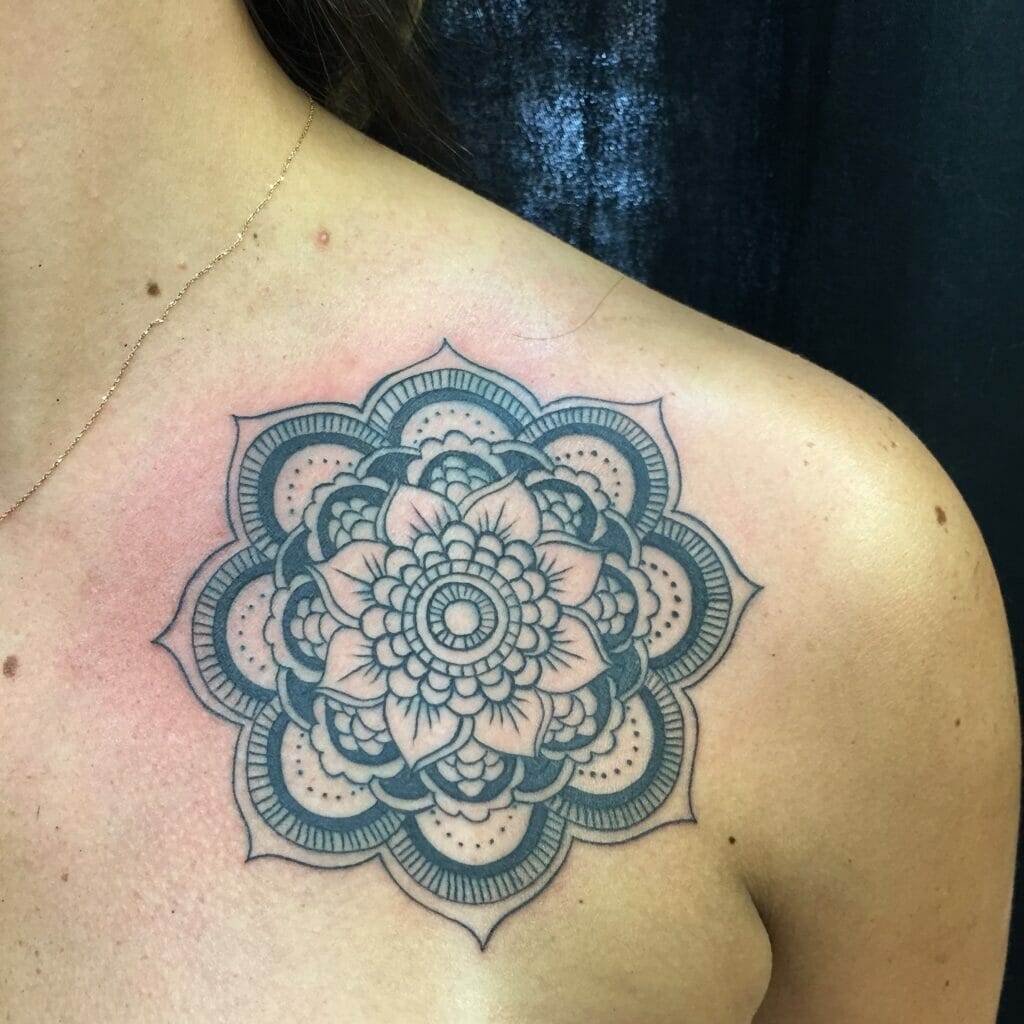
Why geometric ink is redefining modern body art
Geometric tattoos have a rich history that dates back thousands of years, where ancient cultures utilized these patterns to convey spiritual meanings. In modern times, the popularity of geometric tattoos has surged, largely due to social media platforms enabling artists to showcase their work to a global audience.
These tattoos are characterized by precision, symmetry, and symbolism, offering individuals a unique way to express themselves. Geometric tattoos come in various styles such as dotwork and watercolor, catering to diverse aesthetic preferences.
The symbolism of geometric shapes adds depth to these designs, with triangles, circles, squares, and hexagons carrying their own meanings that can be interpreted in different ways.
When considering a geometric tattoo, one must choose a placement on the body carefully, taking into account factors like pain tolerance, visibility, and potential impact on future career prospects.
Finding a skilled artist specializing in geometric tattoos with a portfolio aligned to one’s preferences is crucial in the tattoo process. While geometric tattoos have gained popularity across different age groups, they particularly resonate with younger generations. However, there is an increasing interest in geometric tattoos among older individuals as tattoos become more mainstream.
Looking ahead, the future of geometric tattoos holds promise for new styles and techniques to emerge as the tattoo industry evolves. Geometric tattoos have redefined modern body art through their clean lines, intricate patterns, and profound symbolism, offering individuals a visually stunning way to connect with something greater than themselves.
